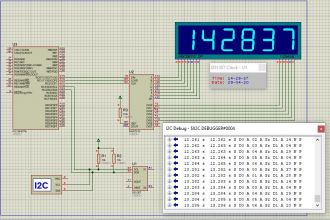
We strongly encourage users to use Package manager for sharing their code on Libstock website, because it boosts your efficiency and leaves the end user with no room for error. [more info]

Rating:
Author: Bugz Bensce
Last Updated: 2020-04-29
Package Version: 1.0.0.0
Category: Timers (Real time clock)
Downloaded: 403 times
Not followed.
License: MIT license
DS1307 Real Time Clock pared with 7 Segment display driven by Max7219
Do you want to subscribe in order to receive notifications regarding "DS1307 with Max7219 and 7 Segment Display" changes.
Do you want to unsubscribe in order to stop receiving notifications regarding "DS1307 with Max7219 and 7 Segment Display" changes.
Do you want to report abuse regarding "DS1307 with Max7219 and 7 Segment Display".
| DOWNLOAD LINK | RELATED COMPILER | CONTAINS |
|---|---|---|
| 1588171272_ds1307_with_7_se_other_pic.zip [502.71KB] | Other PIC Compilers |
|
